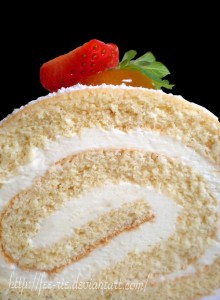Rob Mancini writes:
Two of my favourite things that have come out of Korea include the intriguing yet inspiring choreography from the Gangnam Style video, and Korean rice cakes. In Korea, rice cakes are popular and are traditionally held at room temperature for sale to the public. Refrigeration reduces the quality of these products.
They are comprised of rice, salt, sugar, and water. Other ingredients include chestnuts, walnuts, beans, pumpkin, and tapioca. The combination of room temperature, high pH >4.6, and high water activity provides an environment suitable for pathogen growth resulting in a  potentially hazardous product which would require temperature control. Yet, research has shown that Korean rice cakes can be held at room temperature for days without temperature control.
potentially hazardous product which would require temperature control. Yet, research has shown that Korean rice cakes can be held at room temperature for days without temperature control.
Rice cakes are traditionally steamed anywhere from 30 minutes to 1 hour, dramatically reducing vegetative cells to safe levels and inactivating spores. Subsequently they are moulded into different shapes, wrapped in plastic wrap and sold to the public at room temperature.
Lee et. al investigated the effect of steam cooking on foodborne pathogens and their subsequent growth in five varieties of rice cakes made from flours of regular rice, sweet rice, white rice, tapioca, and mung bean. The results of the study are as follows:
Rice cakes were inoculated with non-spore forming bacteria (Escherichia coli O157:H7, Salmonella enterica serovar Typhimurium, Listeria monocytogenes, and Staphylococcus aureus. Steam cooking 100°C for 30 minutes significantly reduced non-spore forming foodborne pathogens in all samples (>6 log CFU/g) and inactivated spores of Bacillus cereus by up to 1 to 2 log CFU/g. Spore germination occurred after 3 days at room temperature storage, however, populations in most rice cakes remained below 106 CFU/g, which is the threshold for producing the toxin. It is important to note that spoilage bacteria multiply rapidly exceeding the growth of Bacillus cereus, therefore, off flavours and odours would be present before any toxin production.
The authors recommended that Korean rice cakes are safe to sell up to one day of room temperature storage (24 hrs). Further, there have been no documented outbreaks associated with these products.
Sun-Young Lee, Hyun-Jung Chung, Joong-Han Shin,1richard H. Dougherty, and Dong-Hyun Kang. (2006) Survival and Growth of Foodborne Pathogens during Cooking and Storage of Oriental-Style Rice Cakes. Journal of Food Protection Vol. 69, No. 12

